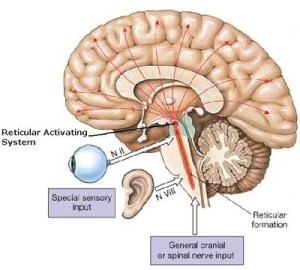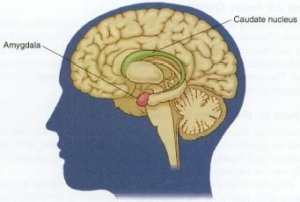Out of all of the sessions that I attended at the Learning and Brain conference, this session on sustaining student’s attention in the digital age was by far the most intriguing, interesting and engaging. Even though the content of the session was incredibly thought provoking on its own, Dr. Judy Willis is a masterful presenter and has the ability to engage an entire room of educators half way through a weekend long conference; that is pure talent, or rather, someone who knows how to take their audience on a dopamine tour.
Dr. Judy Willis is a neurologist by trade, but decided to become a classroom teacher after several years in the neuroscience field. She now presents to educators on what really happens in student’s brains when they are engaged, attentive and learning.
The goal of her session was to create “Neuro-logical” educators that understand why certain lessons and activities get students engaged and attentive, allowing the educator “to work smarter, not harder”. Her session was essentially broken into two parts: the first part was neurological strategies to gain student’s attention with the second part being on how to take that attention and turn it into memory and learning. All of this while explaining the neuroscience of each process.
Part One: Getting Student’s Attention
Dr. Willis’ first major point here was that learning in the brain begins with sensory input, which is very similar to how the brain receives information, it starts with sensory input. This includes not only eyes and ears, but also smell and touch.
Interestingly, Dr. Willis pointed out that the human brain can only process 2,000 bits of information per second (not sure how this is measured), which boils down to the fact that our brains and senses can become very easily overloaded. This was demonstrated by playing the following video, where she asked the audience to count how many times the students in the white shirts passed the basketball. See if you can count how many times the ball is passed between the students in the white shirt here:
There were at least 100 people attending this session and at least half of the attendees did not see the gorilla in the video. Proof in the pudding of how easily our senses can become overloaded, especially when we are focusing on a certain task, such as, counting how many times a ball is passed.
Here’s another video example of this concept. Take a watch of this video here:
So that’s the first part of learning: sensory input. However, for long term memory to happen, the sensory input needs to navigate its way through the brain to the prefrontal cortex, which is the area around your forehead; this is where the reflective brain comes into play. But, before that happens, the sensory input has to go through a sort of “gatekeeper” called the reticular activating system (RAS). As you can see from the diagram below, sensory input is first past to the spinal nerve which then terminates at the RAS.
The RAS is programmed by our genetics to select sensory input for passage that is crucial to our survival. This is what Dr. Willis called the “prime directive” for all mammals. Also, the RAS acts involuntarily, it’s not something that we can train. And even though our brains can only process 2,000 bits of information per second, there are millions of data available for input every second. Where should the brain begin?!
Again, we begin with sensory input. Our brains are wired to notice changes in sound, color, movement, placement of objects, appearances and curious items as a priority over other sensory input. At this point, Dr. Willis also emphasized the importance of novelty in getting the brain to pay attention. To illustrate this, she started walking backwards through the hall and asked the attendees, “if you walked into your room backwards, do you think your students would notice?” I definitely think so!
Her take was that novelty increases attention and awareness because the brain is not sure whether to process the novelty as a threat or benefit to survival since it is something out of the ordinary. To summarize so far, Dr. Willis suggests that using curiosity and novelty in the classroom activates and engages student’s attention because it lights up parts of their brains that are hardwired for survival. She also praised the use of curious videos to stimulate interest – as long as the video is weird and/or bizarre it will get student’s attention.
Back to the thought on sensory input having to navigate it’s way to the prefrontal cortex, Dr. Willis’ research suggests that the act of summarizing “lights” up the prefrontal cortex. So, in a classroom, if a curious/novel event is topped off with a summarizing event, chance are that student’s brains will be lighting up!
To demonstrate this, she gave the attendees a “Syn-nap”, a simple 1-2 minute break where we were allowed to chat with someone, reflect quietly or engage in other reflective exercise. Remember, the brain gets easily overwhelmed by sensory input. Dr. Willis suggests a Syn-nap at least every 30 minutes, if not more frequently. Sounds pretty good, right?
So if you’ve made it this far in this blog post, give yourself a quick syn-nap and come back in a few minutes.
Part Two. Sustaining Attention
The next part of Dr. Willis’ presentation was on RAS (reticular activating system) intake strategies, or, ways to get sensory input into the prefrontal cortex. Her focus her was on prediction, and that while novelty and curiosity can get attention, it’s prediction that sustains attention. On a side note, prediction as a way of sustaining attention was heralded by several other presenters during this conference.
She demonstrated this by using a classic math problem where you are posed with two options: Would you rather take $100,000, or take one cent a day that doubles each day for a month? For this, she had everyone in the room write down their prediction on a piece of paper (or their iPads) and hold it up so that she could “see” the predictions. She admitted that she couldn’t see all of them, but she stated that the act of having each student write down their prediction ensures that each student actually makes a prediction, rather than asking kids to raise their hand and share their predictions. To this she added, “there shouldn’t be hand raising” in a classroom ever again. (Here’s a website that shows the math involved in this problem: http://mathforum.org/dr.math/faq/faq.doubling.pennies.html)
Back to the brain now, Dr. Willis suggests that the brains seeks the pleasure that rewards accurate predictions and that a high stimulus for this is making an accurate prediction. This is when she said to the audience, “Let me take you on a dopamine tour” as dopamine is the substance of predictions.
Dopamine is a neurotransmitter and hormone (seems to be some debate on this topic) that is released as a fluid into the brain. It promotes pleasure, curiosity, attention, motivation and satisfaction. Furthermore, the presence of dopamine can develop perseverance and memory. Boosters to dopamine are:
- Body movement
- Enjoying music
- Being read to
- Interacting well with peers
- Humor
- Choice
- Optimism
and the most powerful of all: intrinsic satisfaction, such as, making correct predictions! Humor is also powerful because when you laugh, you move, which doubles the amount of dopamine! In a classroom, Dr. Willis suggests that even moving around the room as teacher causes student’s heads to turn, which triggers a small amount of dopamine.
The brain seeks the dopamine reward (pleasure) of accurate predictions. In order to gain this reward, the brain wants to predict (on the possibility of getting a dopamine reward), needs to know if the predictions are correct and then learns (rewires memory circuits) from the feedback of the prediction because the brain would like the dopamine (pleasure) again. And through this process, the brain actively seeks for clues that indicate whether a prediction was correct or not.
Dr. Willis suggested a sort of template to use in the classroom that queues into the brain functions discussed so far:
- Begin class with a novelty change, something out of the ordinary.
- This change will prompt curiosity, and allow the space for students to start making predictions throughout the lesson.
- Student attention will be sustained as long as predictions can be made or changed.
- The brain now attends to instructions as a source of prediction clues that can lead to the dopamine reward.
- Test taking
- Boredom
- No personal connection
At this point I would have loved to learn more about the amygdala and strategies to help students that often have an amygdala in a stressed state, but unfortunately the session was coming to an end. In summary, to put this into practice, here is a general outline of sustaining student’s attention in the digital age:
- Novelty and curiosity gets the attention of students by tapping into their “prime directive” and activates their RAS system which selects which sensory input to process.
- The act of predicting and receiving feedback on predictions sustains attention by triggering dopamine releases.
- Reflective processes activate the prefrontal cortex where memories and learning happen, as long as the amygdala is in an unstressed state.


One Response to “The Dopamine Tour (or Sustaining Student’s Attention in the Digital Age)” Leave a reply ›